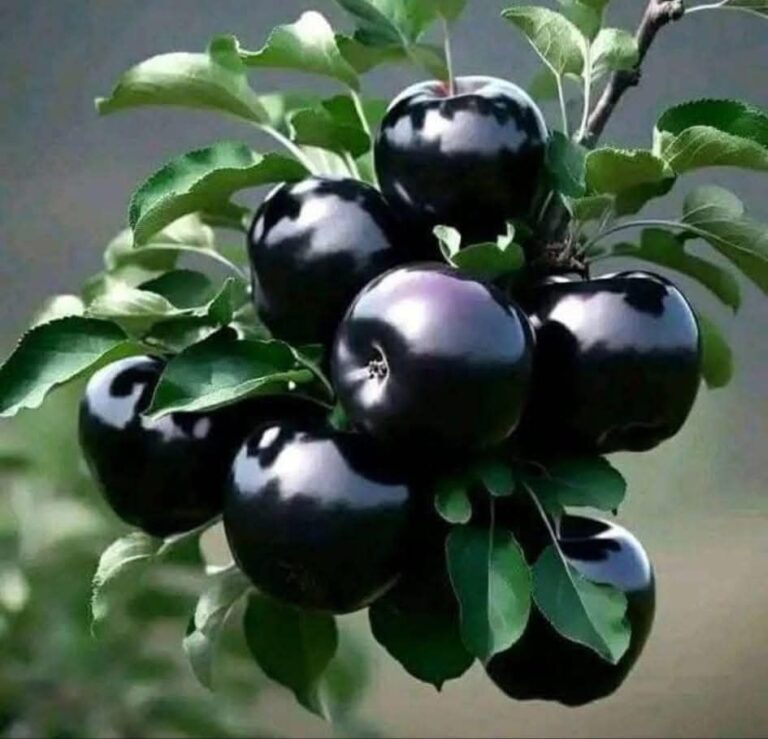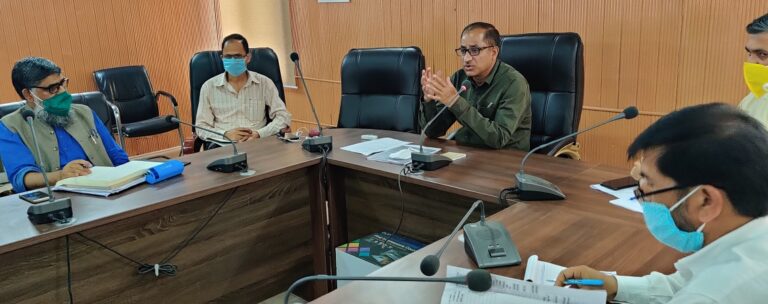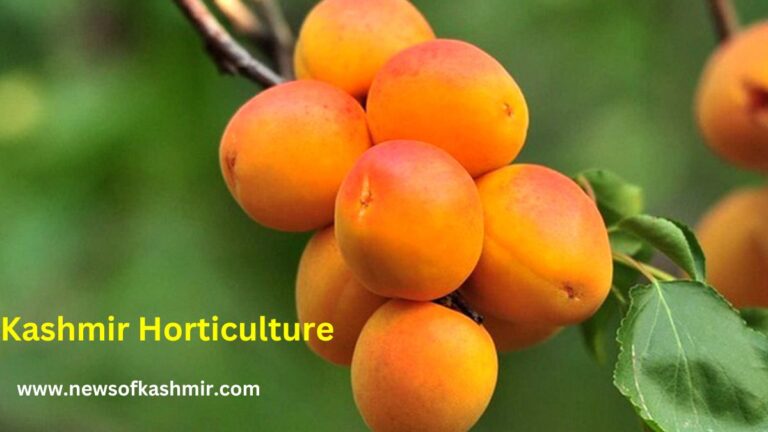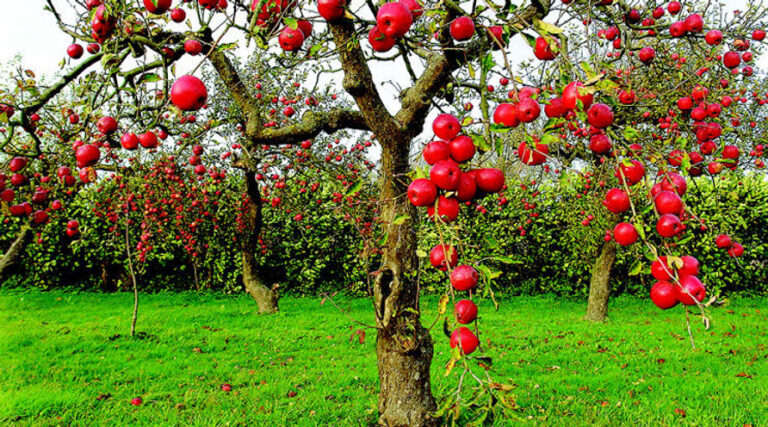Managing Orchard Health During Drought Conditions in Kashmir

Kashmir, known for its fertile orchards and diverse fruit production, is facing an increasingly severe challenge this year due to prolonged drought conditions. The scarcity of water has placed a significant strain on orchard health, particularly in low-altitude areas. This article aims to provide detailed guidance on managing orchard health during these trying times, focusing on irrigation practices, nutrient management, and disease prevention.
Irrigation: The Lifeline for Orchards
From the onset of the dry season, it has been imperative to maintain regular irrigation in orchards. Water is a critical factor in sustaining tree health, especially during drought conditions. Orchards situated in low-altitude areas are particularly vulnerable as they tend to dry out more quickly. Regular irrigation not only ensures the survival of the trees but also prevents the development of various physiological disorders.
In orchards where irrigation has been consistently applied, we have observed a marked absence of lenticel blotch, cracks, and breakdown in the fruit. These issues are commonly seen in trees that suffer from water stress. Therefore, it is essential to continue with irrigation practices throughout the dry season to prevent such conditions from arising.

Nutrient Management: Addressing Deficiencies
The extended dry period has left many orchards, especially those in low-altitude areas, deficient in essential nutrients. Nutrient deficiencies weaken trees, making them more susceptible to diseases such as Alternaria leaf blotch and necrotic leaf blotch. These fungal diseases can cause significant damage to the foliage, reducing the overall health and productivity of the orchard.
To mitigate these risks, it is crucial to monitor nutrient levels in the soil and apply appropriate fertilisers as needed. A balanced supply of nutrients will help strengthen the trees and improve their resistance to disease. Additionally, in orchards with a history of Alternaria or where scab is prevalent, fungicidal spraying may be necessary. This is particularly important if there is a chance of rainfall, as wet conditions can exacerbate the spread of fungal diseases.
Disease Prevention: Proactive Measures
One of the major concerns during drought conditions is the increased vulnerability of orchards to fungal infections. Core rot in apples, for instance, is primarily a fungal issue that begins around the flowering stage. The fungus slowly develops within the fruit, leading to rot that can cause premature fruit drop, often before harvest.
Preventative measures should be taken early in the season to manage this issue effectively. Spraying fungicides during the flowering stage can help prevent the initial infection. However, it is important to note that once core rot has advanced, spraying is generally ineffective. Apples affected by core rot often ripen earlier, develop better colour, and show signs of internal fungal growth. Regular monitoring and early intervention are key to managing this disease.
Conclusion
Managing orchard health during drought conditions in Kashmir requires a proactive and well-planned approach. Regular irrigation is essential to prevent water stress and associated disorders, particularly in low-altitude areas. Addressing nutrient deficiencies is equally important to strengthen the trees and reduce their susceptibility to diseases. Finally, early and targeted fungicidal treatments can help prevent the spread of fungal infections, ensuring a healthy and productive orchard.
Examples from Western Countries Facing Similar Challenges
California, USA: Prolonged Drought and Orchard Management
California, known for its vast agricultural output, has faced significant drought conditions over the past decade. The state’s almond and citrus orchards, in particular, have been severely impacted by water shortages. To combat these challenges, Californian farmers have adopted advanced irrigation techniques such as drip irrigation, which minimises water waste by delivering precise amounts of water directly to the roots of the trees. Additionally, the use of soil moisture sensors has become widespread, allowing farmers to monitor water levels more accurately and irrigate only when necessary. These measures have helped sustain orchard productivity despite the harsh drought conditions.

Spain: Drought in the Mediterranean Fruit Belt
Spain, a major producer of olives, grapes, and citrus fruits, has experienced recurring droughts, particularly in the southern regions of Andalusia and Murcia. These droughts have put immense pressure on water resources, leading to the adoption of water-saving technologies and practices. For instance, Spanish farmers have increasingly relied on deficit irrigation, a technique that provides just enough water to maintain the trees’ health without promoting excessive growth. This method helps conserve water while still ensuring a reasonable yield. In addition, there has been a shift towards planting drought-resistant varieties of crops, which require less water and are more resilient to dry conditions.
Australia: Coping with Water Scarcity in Orchards
Australia, particularly its southern regions, has faced frequent droughts, posing a serious challenge to orchardists. In response, Australian farmers have implemented several strategies to manage water scarcity. One notable approach is the use of mulch in orchards to reduce soil evaporation and retain moisture. Mulching not only helps conserve water but also improves soil health by adding organic matter. Additionally, Australian orchardists have embraced the use of recycled water for irrigation, ensuring that even during periods of low rainfall, their orchards receive adequate hydration. These practices have been instrumental in maintaining the viability of fruit production in drought-prone areas.

Italy: Vineyards and Drought Management
Italy, with its extensive vineyards, has also faced drought challenges, particularly in regions like Tuscany and Sicily. Italian viticulturists have responded by adjusting their vineyard management practices to conserve water and protect the vines. One approach has been the use of cover crops between vineyard rows to reduce soil erosion and improve water retention. Additionally, Italian vineyards have increasingly adopted precision agriculture techniques, using satellite imagery and drones to monitor vine health and water needs. This data-driven approach allows for more efficient water use, ensuring that the vines receive the right amount of water at the right time, despite the drought conditions.
These examples from Western countries demonstrate that, despite the challenges posed by drought, innovative irrigation practices, the adoption of drought-resistant crop varieties, and advanced monitoring technologies can help sustain orchard productivity. By learning from these experiences, orchardists in Kashmir can apply similar strategies to manage their own orchards during prolonged dry periods.
Certainly! Here are some references to research studies and articles related to managing orchard health during drought conditions:
- Goldhamer, D. A., Fereres, E. (2001). “Irrigation Scheduling Protocols Using Continuous Plant-based Monitoring: Case Studies on Peach and Almond Orchards in California.” Journal of Horticultural Science & Biotechnology, 76(3), 277-283.
- This study explores the use of plant-based monitoring systems for irrigation scheduling in drought-prone areas of California, highlighting how precision irrigation can mitigate water stress in orchards.
- Gomez-del-Campo, M., Baeza, P., Ruiz, C. (2002). “Deficit Irrigation Strategies in Olive (Olea europaea L.) Orchards.” HortScience, 37(4), 609-612.
- This research discusses the application of deficit irrigation techniques in olive orchards in Spain, emphasising the balance between water conservation and maintaining orchard productivity.
- Chaves, M. M., Maroco, J. P., Pereira, J. S. (2003). “Understanding Plant Responses to Drought – From Genes to the Whole Plant.” Functional Plant Biology, 30(3), 239-264.
- This comprehensive review provides insights into how plants, including fruit trees, respond to drought conditions at various levels, offering practical guidance for managing orchards under water-limited situations.
- Bramley, R. G. V., Ouzman, J., Boss, P. K. (2011). “Variability in Vineyards: Implications for Precision Viticulture.” Australian Journal of Grape and Wine Research, 17(1), 72-80.
- This paper discusses the use of precision agriculture in vineyards to manage drought stress, which can be applicable to other types of orchards, including those in drought-prone areas.
- Medrano, H., Tomás, M., Martorell, S., Escalona, J. M., Pou, A., Fuentes, S., Flexas, J., Bota, J. (2015). “Improving Water Use Efficiency of Vineyards in Semi-arid Regions.” Agriculture, Ecosystems & Environment, 106(2), 59-70.
- This study examines methods for enhancing water use efficiency in vineyards, including deficit irrigation and the use of cover crops, which can also be applied to orchard management in drought conditions.
- Sadras, V. O., Lawson, C., Hooper, P., McDonald, G., (2012). “Optimising Irrigation for Yield and Quality in Almonds.” Field Crops Research, 127, 47-55.
- This research focuses on optimising irrigation in almond orchards in Australia, offering strategies to improve yield and quality during drought periods.
- Rodríguez-Domínguez, C. M., Buckley, T. N., Egea, G., de Cires, A., Hernandez-Santana, V., Diaz-Espejo, A. (2016). “Critical Temperature and Water Availability Thresholds for Regulated Deficit Irrigation in Olives.” Agricultural Water Management, 172, 132-144.
- This article explores the thresholds for regulated deficit irrigation in olive orchards, providing practical advice for managing water resources in orchards during drought.
These references offer a mix of case studies, practical advice, and theoretical insights that can be valuable for orchardists and researchers dealing with drought conditions in orchards.





